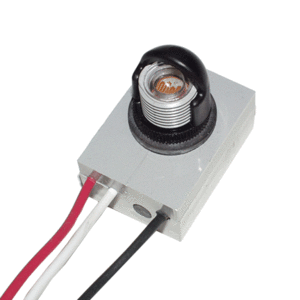Photodetector facts for kids
A photocell, also known as a photoresistor, is a clever electronic part. It changes how easily electricity can flow through it when light shines on it. Think of it like a tiny switch that reacts to light! When there's lots of light, more electricity can pass through. But when it's dark, almost no electricity gets through.
Contents
What is a Photocell?
A photocell is a special kind of electronic component. It's designed to sense light. Its ability to conduct electricity changes depending on how much light hits it. The reddish part you see in pictures is where the electricity moves. When light hits this part, it helps electricity flow better. When it's dark, electricity struggles to pass.
How Does a Photocell Work?
Photocells are often made from materials called semiconductors. These materials are special because they can sometimes conduct electricity and sometimes not. When light shines onto a photocell, it gives energy to tiny particles called electrons inside the semiconductor. This energy "loosens" the electrons. Once they are loose, these electrons can move around freely. When electrons move, they create an electric current. So, more light means more loose electrons, which means more electricity can flow through the photocell. Materials like Selenium can be used to make photocells, but other chemicals work too.
Where Are Photocells Used?
Photocells are used in many everyday things. They are great for sensing when it gets dark or light.
Automatic Lights
You might find photocells in streetlights or outdoor security lights. When the sun goes down and it gets dark, the photocell senses the lack of light. This tells the light to turn on automatically. When the sun comes up in the morning, the photocell senses the light and turns the light off. This saves energy!
Light Meters
Photocells are also used in cameras. They act as a "light meter." They measure how much light is in a scene. This helps the camera decide how to take the best picture.
Other Uses
You can find photocells in some toys, alarms, and even in some solar-powered devices. They are very useful for any device that needs to react to changes in light.
Related pages
Images for kids
-
A photodetector from a CD-ROM drive. It has three photodiodes in the center.
See also
 In Spanish: Fotodetector para niños
In Spanish: Fotodetector para niños




